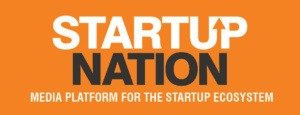
An account of Goa’s mineral resources by the collaborative efforts of GASAB, DMG and Goa’s Accountant General team provides an overview of problems and solutions within the mining industry
The Sustainable Development Goals and the System of Environmental Economic Accounting by the United Nations guide governments and organisations to formulate policies and reports that place emphasis on the environment and its limited resources. In order to ensure that the availability of resources and economic growth are in sync with one another, the Government Accounting Standards Advisory Board (GASAB) initiative along with the joint effort of Goa’s Accountant General team and the Directorate of Mines and Geology (DMG), resulted in the development of the Natural Resource Account of Goa, 2020 – 2021 (NRA).
The NRA comprises of Goa’s resources (major and minor) briefly, a compilation of physical and monetary values that enables cross verification of revenues with regards to actual extractions, an exploitation pace of resources at a sustainable level, an analysis of market and export value that allows for the assessment and review of royalty rates that ensures protection of the State’s revenue interest. It also helps with the assessment of future revenue streams and includes the mine-wise data on resources – pan India. It aids in the identification of alternate economic and energy resources, besides looking into illegal mining and the progress of Climate of Parties (COP) 26th meet commitments.
The NRA for Goa consists of three major minerals namely- iron, manganese, bauxite and 20 minor minerals of which basalt, laterite and sand (ordinary, silica and beach) are prominent mineral resources of the state. Goa’s iron ore reserves are estimated to be around 1000 million tonnes, of which 80 per cent are fines, the rest of it being lumps. The northern mines of Goa produce more than one million tonnes per annum as the iron deposits from this block are of a better quality.
Key Findings
1) The DMG office maintains registers for monitoring, filing of monthly and annual returns by the lessees, however data of the same was found to be scarce due to delays in compilation of data and production of records that form the necessary basis for ascertaining the royalty and dead rent or surface rent receivable and other related receivables such as fines, fees, or penalties, if any that had been levied.
2) It is the DMG office that supplies challans’ data, generated at its office for making relevant payments to the State government by lessees and details of receipts under various heads compiled from such records. Cross verification indicated that the DMGs and Directorate of Accounts’ (DoA) data were inconsistent. Particulars of remittances by other departments, municipalities, panchayats, etc were not available with DMG; therefore the royalty received data as per the DMG contrasted with the total receipts data as per the DoA. A comparison of their databases showed that combination of challan number and the amount mentioned were unalike, thus the DMG accepted the DoA figures.
3) The DMG did not have the grade-wise production data and its June 2022 compilation of the dispatches of major minerals information from the trip sheet data fell short of documentary evidence.
4) The surface rent rate was not notified by the state government.
5) Non-payment of dead rent by 39 lessees had not provided returns that were pertaining to minor mineral leases.
Future Recommendations
The NRA provides several solutions to ensure efficiency and thus placed emphasis on automation and transparency in data collection and consolidation for all mining activities of each lessee that include mining plan, clearances from concerned departments, geo-spatial data, geo-fencing of mines (clear identification of mining area), state authority approvals/actions, assessment of quantity and detailed plans for periodic extractions. The NRA also suggests an electronic source that stores the data and is linked for compliances and further use at various levels in matters concerning the lease grant process, vehicle movement, trip sheets, and so forth. In addition, records of illegal mining and the data on the action taken against could also be stored electronically. Moreover, it also highlighted that the accuracy and authenticity of data sets generated must be established by a state-designed authentication process among other suggested directions.
Successive Developments – Guidelines and an Automated Management System
In order to ensure timely collection and collation of data for the Asset Accounts, the GASAB presented guidelines that suggested methodologies for quarterly reporting framework and novel initiative of mapping the supply and use of resources during June 2022. The planning for the same will result in a broad and an extensive profiling of mineral extraction and their use for effective management and optimisation of resources for the State exchequer.
The Bhumija Ore Management Systems is a web-based automation solution for mining activity and storing information of related compliances by lessees, transporters etc, through the Goa Electronics Limited (GEL). This development will provide an online registration of permits, e-wallet, stakeholders, vehicle tracking system, and the like in matters concerning all minerals. The establishment of this automation system was taken up by the DMG during July 2022.
Concerns over increased employment of non-Goans
In Bicholim, panchayat members of Pilgao gram sabha and present unemployed workers in an uproar raised their concerns about the growing numbers of non-Goans who were employed and the subsequent consequence of scare opportunities for Goans within the mining industry. They protested that the mining company should not be permitted to function in its jurisdiction until this problem is tackled. The sarpanch stated that a decision will be made after investigating matters concerning the same





